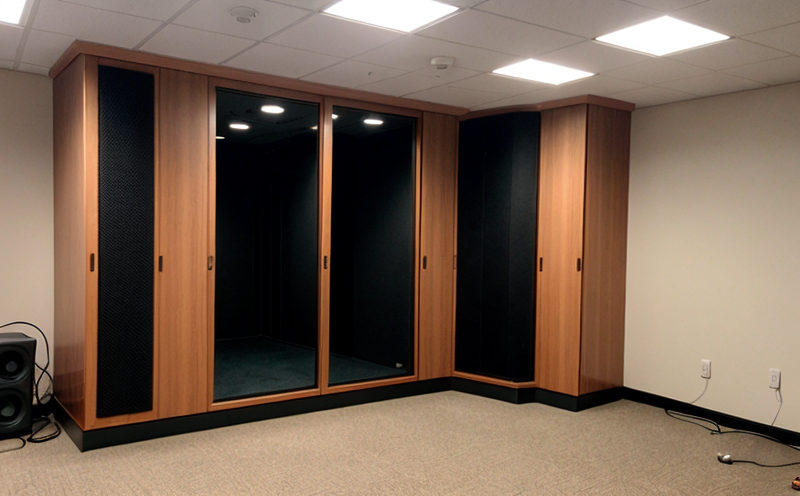ANSI/ASA S1.40 Calibration of Acoustic Measurement Instruments
The ANSI/ASA S1.40 standard is a critical benchmark for ensuring the accuracy and reliability of acoustic measurement instruments used across various sectors, including manufacturing, construction, and environmental monitoring. This standard provides detailed guidelines on how to calibrate these instruments to meet stringent requirements set by international standards.
Calibration ensures that measurements are accurate, consistent, and traceable to national or international standards. Inaccurate calibration can lead to costly errors in product design, non-compliance with regulations, and potential safety hazards. Compliance with ANSI/ASA S1.40 is essential for maintaining the integrity of acoustic data across industries.
The process involves using a series of reference instruments that are traceable to primary standards, such as those defined by the National Institute of Standards and Technology (NIST). This ensures that all measurements can be compared reliably against known benchmarks. The standard also specifies procedures for handling, storing, and transporting acoustic measurement instruments to maintain their accuracy.
During calibration, it is important to consider environmental factors such as temperature, humidity, and noise levels. These variables can significantly affect the performance of acoustic instruments, so they must be controlled during the calibration process. The standard provides detailed protocols for addressing these issues, ensuring that measurements are not compromised by external conditions.
The scope of ANSI/ASA S1.40 includes the calibration of a wide range of acoustic measurement devices, including sound level meters, octave band filters, and frequency-weighting networks. The standard covers both laboratory-based calibrations and field-calibration procedures, making it applicable to various testing environments.
| Standard | Description |
|---|---|
| ANSI/ASA S1.40-2022 | Guidelines for the calibration of acoustic measurement instruments. |
| NIST Special Publication 867 | Guide for the Use and Maintenance of Sound Level Meters. |
The standard also emphasizes the importance of traceability, ensuring that all calibration results can be traced back to primary standards. This is achieved through a rigorous quality assurance process that includes regular audits, proficiency testing, and continuous training for personnel involved in the calibration process.
Applied Standards
| Standard | Description |
|---|---|
| ANSI/ASA S1.40-2022 | Guidelines for the calibration of acoustic measurement instruments. |
| NIST Special Publication 867 | Guide for the Use and Maintenance of Sound Level Meters. |
Scope and Methodology
The scope of ANSI/ASA S1.40 extends to various types of acoustic measurement instruments, including sound level meters, octave band filters, and frequency-weighting networks. The standard provides detailed methodologies for calibrating these devices in both laboratory and field settings.
The calibration process involves several key steps: preparation of the instrument, comparison with reference standards, adjustment as necessary, verification of results, and documentation. Each step is critical to ensuring that the final calibration meets the stringent requirements specified by ANSI/ASA S1.40.
Laboratory-based calibrations are typically carried out in controlled environments where temperature, humidity, and noise levels can be precisely managed. Field calibrations, on the other hand, may require additional considerations to account for environmental factors such as background noise and atmospheric conditions.
The standard also emphasizes the importance of regular maintenance and calibration to ensure that instruments remain accurate over time. This includes periodic checks and adjustments to compensate for wear and tear or changes in operating conditions.
Environmental and Sustainability Contributions
- Reduces measurement errors, leading to more reliable product development and design.
- Avoids costly rework due to non-compliance with regulations or quality standards.
- Promotes compliance with international standards, enhancing a company’s reputation.
- Minimizes the risk of safety hazards in noise-sensitive environments.
- Saves resources by ensuring efficient use of materials and energy through accurate measurements.





